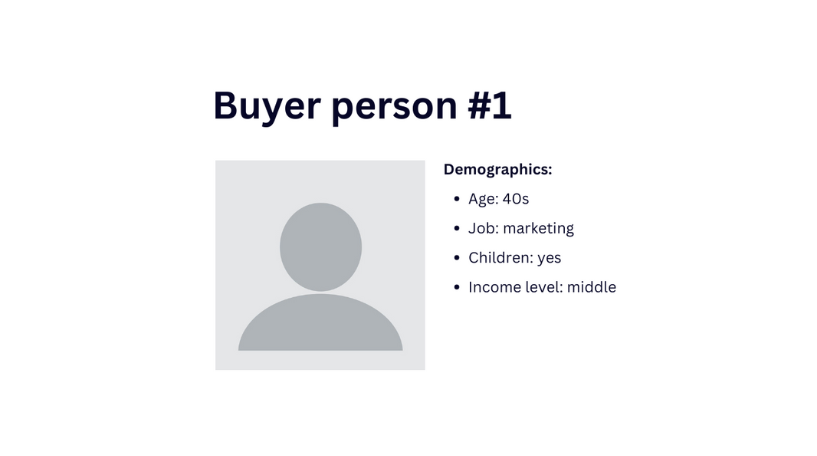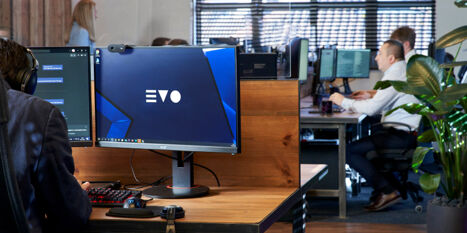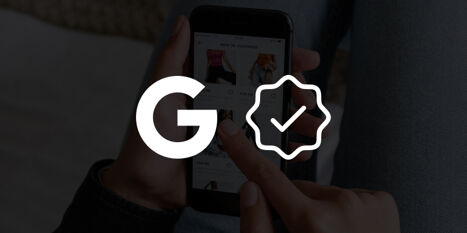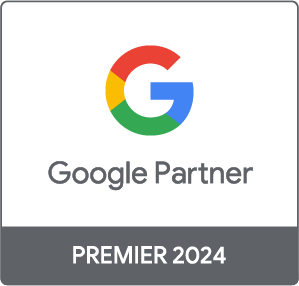Brighton SEO: the future of SEO in a nutshell

If I was ChatGPT I'd have given myself the command - ‘write me a post distilling two days of intense learning at Brighton SEO into one post’ - this though is entirely human written.
A summary of the most useful bits:
- Cognitive load should impact content design
- Content design is just as important as the written word
- AI is now king (or is it?)
- Empathy and neuroscience are at the start/heart of everything
- Where does social fit into a search strategy?
- If AI isn’t the key to scaling content, what is?
- Chasing ranking factors is still a thing
1. Cognitive load should impact content design
Part of the joy of attending conferences is not only being inspired by the possibilities the experts are presenting. It’s the chance to be in a room and learn from real-life people that has become even more important following the starvation of human contact during Covid-19. But also in a world that’s increasingly lived on screens, it feels like a necessity.
Our capacity to absorb information is increased without distractions pinging in from all angles (if you ignore those red dots). As a result, cognitive load [covered by Emma Russell - Oxford Comma Digital] is reduced giving the working memory more space. It’s a nice example of why it’s important and why you should bear it in mind when you’re writing and designing content.
It’s one of the reasons ordered lists are so important:
- They’re easier to digest.
- Good clean web design is vital.
- Busy, messy sites don’t work.
- Write skimmable content.
- Images should be digestible too.
2. Content design is just as important as the written words
“The confused mind never buys,” said Chloe Smith from Blue Array in her talk. “Quick and simple is the way to go,” she states in reference to the F pattern.
What’s the F pattern?
That’s where our eyes go instinctively when faced with a wall of text. No one should have to deal with that. They’re going to bounce pretty quickly and that’s not what SEOs need.
Google is putting more and more emphasis on users, meaning a poorly laid out piece isn’t meeting the users' intent just as much as a poorly written article.
3. AI is now king (or is it?)
Now we can’t talk about content, without mentioning AI. It was the main theme throughout the conference, which you’d expect. What was surprising was the extent to which it’s being embraced with a ‘but’.
I expected to be told I wasn’t doing enough, wasn’t using AI in the right way, and was missing multiple opportunities. Feel familiar? Panic not, it seems we’re all on the same page (no pun intended).
AI: the pros
AI is unbelievably useful for:
- Ideation
- Speeding up laborious tasks like extracting specific information from what it’s been presented
- Repurposing existing content for other channels.
Will AI replace us?
As for replacing humans, that’s a big no. I learnt from Carrie Rose - Rise Seven that creativity is now on the World Economic Forum's list of essential skills. “What AI can’t manufacture is creativity”. Humans still have a monopoly on that. AI, for copywriting at least, is currently only as good as the human input before and after. It feels like creativity is going to become more and more important to stand out.
What about AI being able to scale content production?
ChatGPT was heralded as being able to produce content at scale. And it can but one vital point is missing there. Quality. We all want scale but if it comes at the cost of quality are we going to achieve the results we need?
How can we stand out in a sea of standardised content? That’s where we could be headed according to Ashley Liddell - Reprise. “Users will be uninspired and lack decision-making ability leading to decision fatigue (more on the neuroscience later). Searchers will move to other platforms to get their search hit”.
Tone of voice will be vital to stand out
As Carlos Meza - Crowded Content talked about - brand tone of voice is going to be something you can use to stand out and be memorable now more than ever. But how do you create that memorability? What is your target audience looking for?
That leads nicely into the next topic.
4. Are empathy & neuroscience at the start/heart of everything?
I didn’t expect to hear from a neuroscientist - Giulla Panozzo - Neuroscientive and a behavioural scientist - Dr Kiran Webster - Reflect Digital, but what they say makes sense. It’s all well and good pumping out content with the hope it ranks well, but how do we expect that to convert (even with our tone of voice perfectly polished), without understanding what’s driving our audience?
What are the emotions behind the decisions?
“Data is important but data comes from humans,” says Kiran. “We are feeling machines that think. Not thinking machines that feel”. Humans don’t make logical, data-driven decisions naturally. What are the emotions behind the decisions that we can tap into to build empathy and the trust that comes with it?
Why attention is the biggest commodity
This dovetails neatly into the neuroscience bit. “People make decisions emotionally and justify them rationally,” Giulla Panozzo - Neuroscientive points out. Ultimately we’re all vying for attention. It’s the biggest commodity in digital marketing today and if there was a £ sign on it, you can bet it’s going to be high. Think about the mind-blowing stats on how many ads we are exposed to in a day and you get the idea.
The average person is exposed to approx. 5,000 ads a day.
How neuroscience helps us grab attention
Understanding your customer goes way beyond creating a persona. It’s about understanding the human brain so we can grab attention and tap into motivations more effectively and generate content that is truly user-centric.
To grab that attention we need empathy to know what they’re motivated by but we also need to understand how attention works to get the most from it.
Understanding attention to harness it
Our attention is under intense competition and is impacted by several things:
- Cognitive bias - things you’re drawn to because you're familiar with them. Think branding and the use of imagery.
- External factors like motion and sound - in advertising terms that’s video.
- Relevancy, for example, if you hear your name being called or read a keyword that’s relevant to you.
- Mismatched information e.g. bold characters and CAPS, also grab us.
Unbelievably, Emojis elicit more responses than faces!

Have a read about external response potential. The brain is socially wired so social proof REALLY is important.
Turns out neuroscience is a gold mine:
- Negative bias - we naturally remember bad things better.
- Confirmation bias - we favour information that backs up our own opinion.
- Heuristics - a mental shortcut used to avoid cognitive overload (that word again!).
- Loss aversion - what if ‘it’ runs out.
- Familiarity - sometimes we pay more to be sure.

We know we need to build trust by having empathy and grab attention by understanding what makes us tick. That’s no use if we can’t find the people we’re trying to impress.
5. Where does social fit in a search strategy?
The why:
According to Carrie Rose from Rise Seven we need to be using a “multi-platform search strategy to create demand”. It makes sense, we use channels like TikTok and Pinterest to discover new things. That makes them ideal for top-of-funnel awareness activities and the potential to steal demand from Google. So, if you’re seeing stats for awareness, and informational-based content decreasing, SEO isn’t dead, and demand isn’t dropping - it’s merely shifting channels. Users are looking at other sources and considering how quickly we process images and videos vs written content it’s hardly surprising.
The how:
Captions and titles can be optimised in the same way you would any content. The ‘others searched for’ element is great for content and keyword ideas, tapping into new trends you may not know about.
6. If AI isn’t the answer to scale what is?
Templated content. Ok, it’s a bit more complicated than that. Greta Munari - Trainline spoke about their project to create millions of new pages. And no, they didn’t use ChatGPT. In fact, using it would have been more time-consuming than not.
Why? Proofreading that many pages wouldn’t be feasible. Instead, they did this:
- Created multiple variants of multiple paragraphs within a template.
- Randomised the order, so each page had a different combination of paragraphs.
- Pulled in dynamic content to make the pages unique.
Killing two birds with one stone.
7. Chasing ranking factors is still a thing
Ultimately we’re still all after rank. That sounds like an anti-user intent statement these days but ranking being a goal doesn’t mean user intent isn’t. Everything needs to be perfectly aligned.
We’ve got quality content, written empathetically so it’s fulfilling user intent and appeasing the Google Overlords, and grabbing our customers’ attention.
By focusing on the users, by definition, we’re going to create ‘better’ content. If Google is giving us brownie points for that, then it's a win for customers, a win for us, and a win for Google.
Summary on Brighton SEO 2023
The key takeaways for me are:
- Be led by user intent: in plain English - do what will resonate with your customers.
- Truly understand your customers: no benign personas need apply. Empathise with them and tap into those motivating emotions, and you’ll begin to build trust. And trust wins sales, and earns you repeat business.
- Rank will come from joining all the dots: it won’t magically happen. You need to be ticking multiple boxes. A good place to start is to do the above. Then you can layer in the technical expertise. Everything works in unison. There is no silver bullet.








